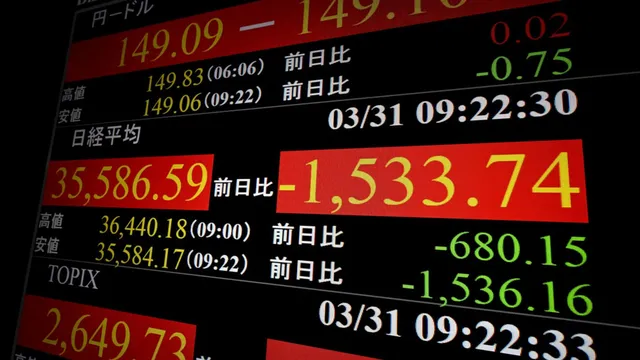
Trump imposes 25% tariffs on imported cars and parts
2025-04-03 17:11- The U.S. has implemented a 25% tariff on all imported vehicles and auto parts starting today.
- Global stock markets have reacted negatively, with steep declines in Asia and Europe.
- The tariffs are expected to lead to increased consumer prices and a potential economic downturn.
Express your sentiment!
Insights
As of April 2, 2025, the United States has enacted significant tariffs on imported vehicles and auto parts as part of a broader trade strategy initiated by President Donald Trump. The administration has implemented a 25% tariff on all cars entering the U.S., which could lead to increased prices for consumers. In addition to the automobile sector, the U.S. has already placed tariffs on imports from Canada, Mexico, and China targeting various goods, including steel and aluminum. These economic measures have resulted in steep declines in global stock markets, particularly in Asia and Europe, where investors are wary of a potential trade war. The automotive industry is particularly concerned about these tariffs, with analysts predicting a rise in car prices, potentially affecting sales numbers and consumer spending in the coming months. Compounded by previous tariffs, this move is seen as a crucial point in Trump’s term, aiming to reshape international trade dynamics in favor of U.S. manufacturing and jobs. Various sectors including groceries and construction materials are also likely to feel the pressure from these tariffs, projected to further widen the impact across the economy if retaliatory measures are triggered by other nations.
Contexts
The implications of Donald Trump's tariffs on global trade have been a topic of significant concern and analysis since his administration introduced a series of tariffs aimed predominantly at China and other nations. The tariffs, which were framed as a means to protect American industries and workers, have had profound effects not just on the U.S. economy, but on international trade relations and supply chains. By imposing tariffs on a wide range of imports, Trump sought to address trade imbalances, stimulate domestic production, and counter what he described as unfair trading practices. However, these policies led to retaliatory measures from other countries, particularly affecting agricultural exporters like soybean and pork producers in the U.S., who faced barriers in key markets such as China. This tit-for-tat escalation has shaped a more protectionist global trading environment, raising concerns about the stability of the international trade system overall. The economic impact of these tariffs was felt in various sectors, sparking debates about their effectiveness. While proponents argued that tariffs could lead to job creation and revive certain industries by insulating them from foreign competition, critics pointed to rising prices for consumers and raw material shortages for manufacturers. This led to increases in production costs, with many firms either passing those costs onto consumers or reducing their profit margins. Additionally, small and medium-sized enterprises, which often operate on tighter margins, mourned the decline in competitiveness as domestic prices rose. The unpredictability of trade policy under Trump catalyzed further uncertainty, complicating long-term business planning and investment decisions. Global trade dynamics shifted as countries sought to diversify their trading partners in response to U.S. tariff policies. These moves included strengthening trade ties within regions or entering into alternative trade agreements. For instance, countries that were initially disadvantaged by U.S. tariffs began negotiating deals to bolster their economic relations, thereby forming new alliances and sharpening competitive edges that undermined U.S. strategic interests. The European Union, for example, increased its focus on robust trade agreements; likewise, nations such as Mexico and Canada reassessed their position in the North American trade landscape through the USMCA replacement of NAFTA. Such shifts contributed to a dilution of U.S. dominance in global trade, suggesting that the tariffs not only provoked immediate economic repercussions but also had longer-lasting strategic consequences. In conclusion, Donald Trump's tariff policies significantly impacted global trade by introducing protectionist measures that reshaped market dynamics across the world. While the intention behind these tariffs was to bolster domestic production and create jobs, the reality has been complex, intertwining the U.S. with a web of international responses that highlighted vulnerabilities in supply chains, raised costs for consumers, and prompted rapid adjustments in trade relationships. As the world moves forward post-Trump administration, the lessons learned from these trade policies will likely inform future strategies as nations continue to navigate an increasingly interconnected economic landscape that demands cooperation over conflict.